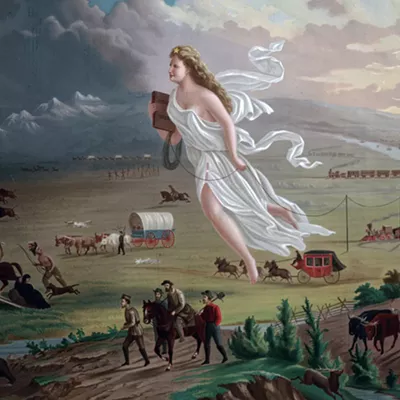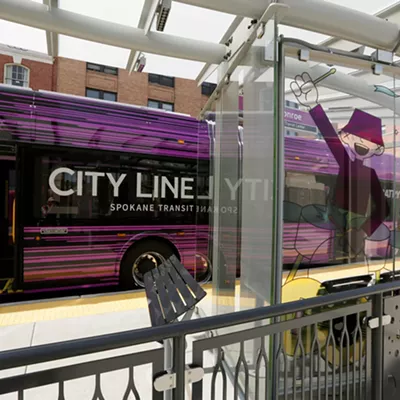Not long ago, if you wanted to record a rock band, a jazz ensemble or a symphony orchestra, there was only one way to do it: live. To capture the sound of each instrument playing harmoniously together, you had to have all the musicians playing those instruments in the same room at the same time. If one person screwed up his or her part, everyone would have to start all over again from the top. In the mid-'60s, however, the arrival of multi-track tape machines changed all that. With multi-tracking, each instrument could be recorded separately on an individual channel or "track." Each additional instrumental or vocal part could be then recorded next to the first part (or "overdubbed"), creating the potential for amazingly dense and layered walls of sound.
In the modern age, 35 years after producer George Martin showed the world (with Beatles' Sgt. Peppers Lonely Hearts Club Band) what could be done with a basic four-track tape recorder and a little ingenuity, multi-track recorders of amazing power and sophistication are available and surprisingly affordable to just about everyone. Today, for a few hundred bucks, an amateur musician or recording hobbyist can pick up a portable studio about the size of a laptop computer with recording and mixing capabilities that professional engineers only a decade ago would have sawn their legs off to own.
"There's a lot of great stuff out there," says Aaron Hein of the Guitar Center music store in Spokane. "You can spend anywhere from $300 on up. Even just 2,000 bucks can really get you into, like, the setup of everything you'd ever need."
Obviously, the best way to get a professional-quality recording of your masterwork is to go into the studio -- locally, check out College Road and Black Coffee Recording -- and have someone who knows about sound do the work for you with professional gear in a room where the acoustics are controlled. If you have the budget and the time and are looking to get the best possible results, seek out the pros. But if you have limited funds, work best at home or just like the idea of noodling with faders, switches and knobs, know that the equipment is there for you. In fact, the results attainable by amateurs with modern consumer-grade recording gear, a few decent microphones and a good ear are often remarkable.
Digital Audio Workstations -- Computer-based systems (utilizing software such as Pro Tools) are becoming ever more common in home and professional recording studios. The recent explosion in digital audio workstations -- compact yet full-featured, hard drive-based mini-studios -- shows that semi-pro and amateur recording freaks are creating a big demand for portable, stand-alone units.
"The computer-based stuff is hot," says Hein. "But the all-in-ones, with a mixer and a hard drive recorder and a CD burner, are doing very well, too. It's a good solution. You can take them anywhere. If your computer crashes, you're not stuck, and once you learn it, you've learned it. They are very easy to use."
Recent advances in digital technologies have put these portable eight- and 16-track machines into the hands of amateurs -- all for a fraction of the cost of their tape-based counterparts. Consider this: Roland's top-of-the-line VS-2480CD digital audio workstation is smaller than a briefcase, yet it records 24 tracks with 24-bit accuracy to an internal hard drive. With a fully loaded mixer section, onboard signal processing and built-in CD burner, it records, mixes, masters and burns -- truly an all-in-one studio -- and can be had for around $3,800. While that may sound like a lot, if you consider that an analog tape-based machine of similar capabilities would cost in the neighborhood of $50,000, you begin to see the power potential of modern digital recording. (Eight-track digital audio workstations start at around $500).
"You get a lot of bang for your buck," agrees Hein. "You can get a good setup that will produce a really good CD for $1,000."
Digital or Analog? -- Yet digital isn't perfect. There's a reason many professional musicians continue to record in analog and why, given an unlimited budget to work with, most of the others would also choose to capture the moment on tape. While digital recording is an essentially destructive process, analog recording preserves the integrity of the original audio signal. That's because analog conveys the same sounds heard by the human ear. In the conversion of an analog audio signal to the digital realm, however, the original signal is chopped up into tiny pieces and converted into a digital stream (for easy manipulation) then reconstituted into the analog signal that you actually hear. The trouble is that even with the finest A/D and D/A converters in the world, pieces of the original analog signal are lost in translation, leaving you with only a reasonable facsimile of the original. But the advantages of working in digital (freedom from noise, incredible dynamic range, ease of signal processing, cost, etc.) all but overwhelm this one downside.
The gear -- So what's out there? And where can you get your grubby hands on it? Here are a few options from some of the leading manufacturers of portable studios. Unless otherwise indicated, all are hard drive-based digital machines.
Tascam 424 MKIII This is not a hard-drive based unit but a cassette tape-based analog machine -- probably the finest, most feature-packed and value-priced unit of its kind ever made. For around $300, you get a flexible six-channel mixing console, four-track simultaneous recording, a wide variety of in-out jacks (including four balanced XLR mike inputs), two recording speeds and DBX Type II noise reduction (which takes out a majority of tape hiss). It uses common high-bias cassette tapes as a recording medium that is removable and can be easily stored or archived for later remixing (a feature lacking in some hard-drive machines).
Pros: Simple, straightforward operation; six-channel mixer section with four XLR mike inputs; DBX Type II noise reduction; the portability of tape; the thrill of analog.
Cons: No on-board processing; limited tracking and editing options; the downside of analog (tape hiss, generation loss).
Korg D1200 MKII This unit puts state-of-the-art 24-bit technology -- along with 12-track recording, 12-track simultaneous playback, on-board effects, a 40 GB hard drive and an internal CD burner -- into your hands for just under $1,000.
Pros: High-capacity 40 GB hard drive; built-in CD burner.
Cons: Small-ish LCD display; somewhat limited mixer section.
Fostex VF80 For $500, this is a pretty affordable way to get started in digital recording. It comes with eight digital tracks, a 20 GB hard drive, two guitar and two XLR mike inputs and lots of on-board digital effects. Add a CD burner for an extra $200.
Pros: Good-sized hard drive (hold eight hours worth of eight-track recording); very compact; easy to use; inexpensive
Cons: Only four inputs; skimpy mixer section.
Yamaha AW2816CDHD This Yamaha unit takes it up a significant notch for not much more bread ($1,700). This is a very sophisticated and refined machine that combines a fully digital 28-input mixer, a 16-track, 24-bit, 20 GB hard-disk recorder and a CD-RW drive for mastering the final versions to CD. The rear panel is loaded with eight mike/line inputs and gobs of other connectors. It's also expandable and can connect with a host of computers, SCSI and MIDI devices.
Pros: 24-bit linear (uncompressed) recording on all 16 tracks; eight-track simultaneous recording; flexible mixer; built-in CD burner; easy to use.
Cons: I can't find any.
Roland VS-2480CD This dream machine will set you back a cool $3,800. But it's money well spent: a 24-track, 24-bit digital workstation with serious processing power, flexibility, features up the yin-yang, and a built-in CD burner.
Pros: 24-track, 24-bit digital recording; 16-track simultaneous recording; 64-channel digital mixer with 17 motorized faders; eight XLR/16 balanced TRS inputs; VGA video output; highly flexible and expandable.
Cons: A little pricey for mere mortals.
Publication date: 02/05/04















